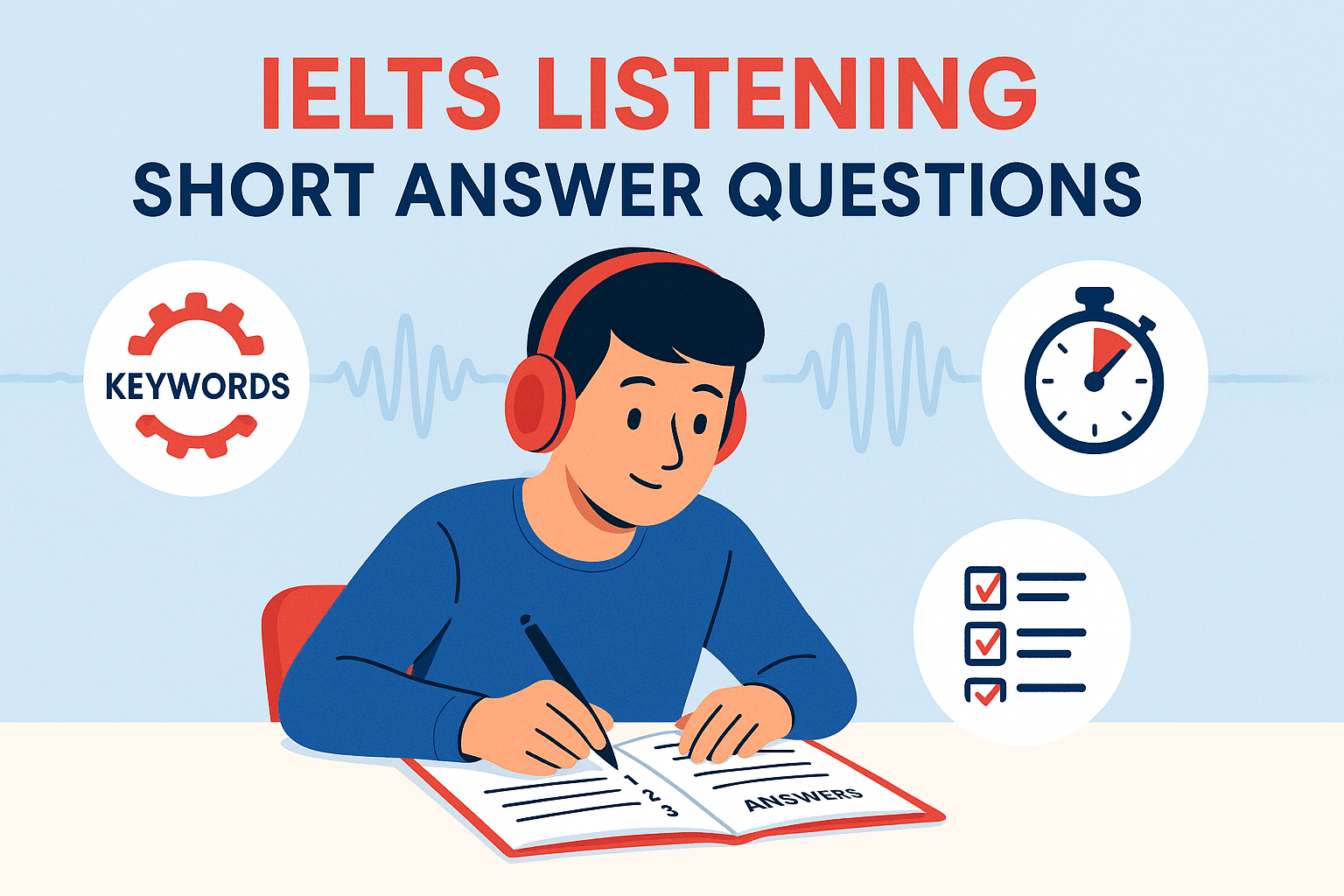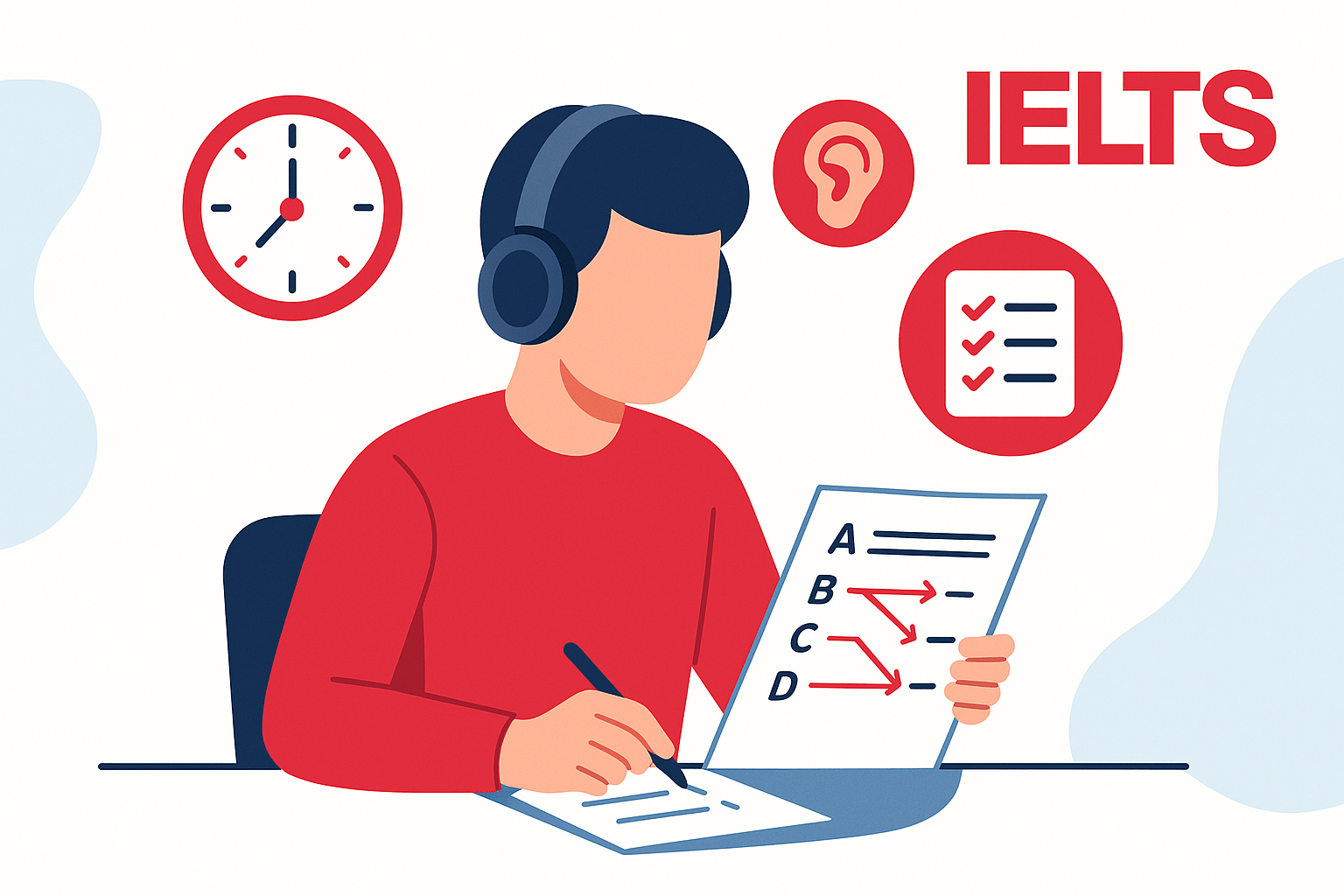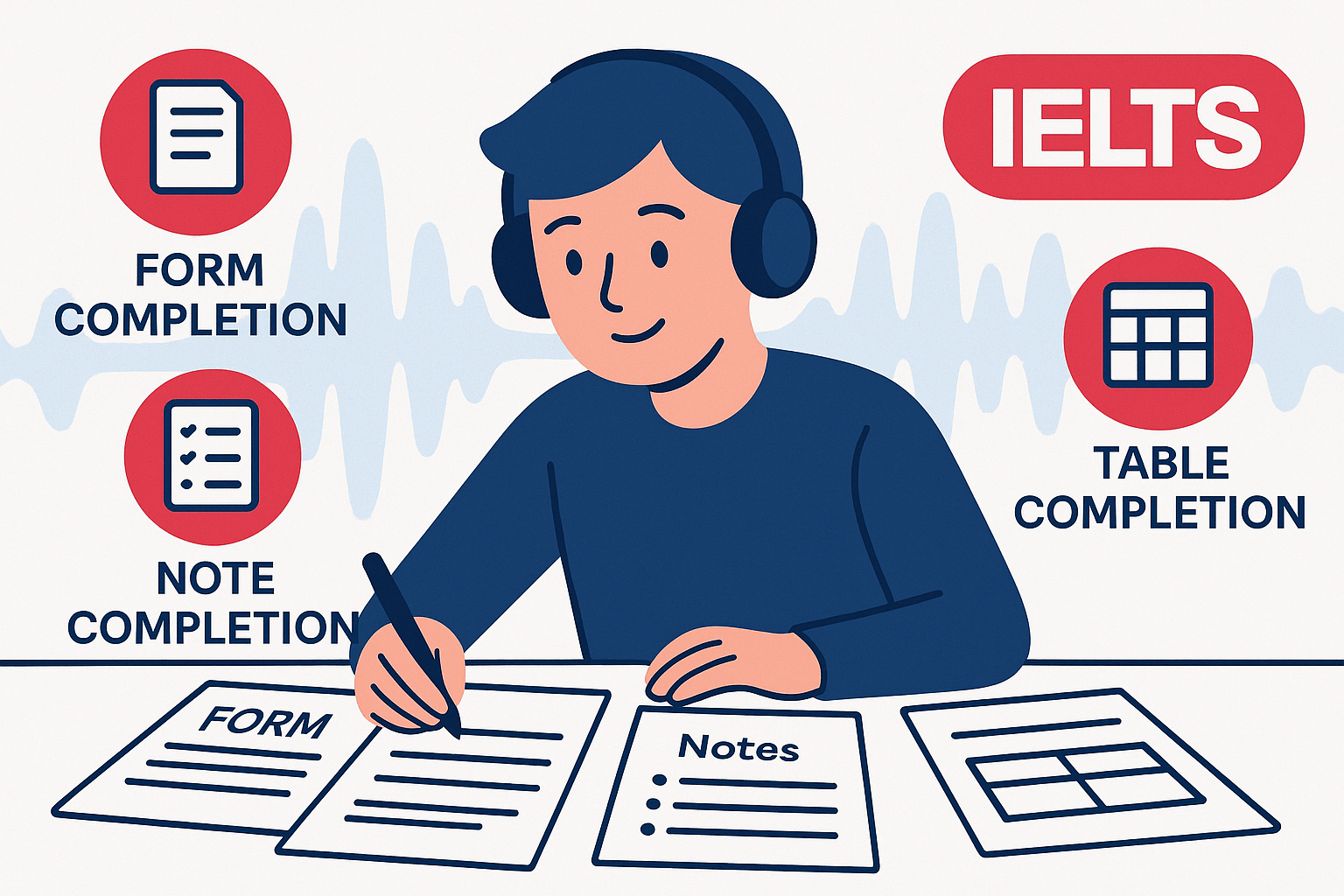- Why Students Struggle with Map and Diagram Labelling
- Tip #1: Start by Predicting the Type of Labels
- Tip #2: Pay Attention to Directions and Orientation
- Tip #3: Use the Labels to Your Advantage
- Tip #4: Focus on the Sequence of Information
- Tip #5: Don’t Panic If You Miss One
- Practice and Strategy Go Hand-in-Hand
- FAQs about IELTS Listening Map and Diagram Labelling
If you’ve ever found IELTS Listening map and diagram labelling questions tricky, you’re not alone. As an international IELTS teacher helping students worldwide, I’ve seen many learners stumble at this stage of the test. The good news? With the right techniques, these questions can actually become your strongest area.
Let me walk you through real challenges my students faced and how we solved them together—step by step.
Why Students Struggle with Map and Diagram Labelling
When my students first encounter IELTS Listening map and diagram labelling tasks, the common reactions are confusion and panic. Why? Because they’re trying to listen, visualise, follow directions, and identify labels—all at once.
Here are the top three issues I regularly see:
- Not knowing how to predict what’s coming
- Getting lost in the directions (left, right, north, etc.)
- Failing to connect what they hear with what they see on the page
If any of this sounds familiar, don’t worry. Below are my proven tips to help you master IELTS Listening map and diagram labelling with confidence.
Tip #1: Start by Predicting the Type of Labels
Before the audio begins, use the 30 seconds to scan the map or diagram. Ask yourself:
- Are the labels locations (e.g., library, car park)?
- Are they parts of an object (e.g., engine, wheel, handle)?
This simple prediction helps your brain focus on the type of vocabulary you’ll hear.
I always tell my students to mark out obvious areas on the map—like doors, starting points, and landmarks. It’s a strategy that works across all question types, as I explain in my complete IELTS Listening Band 7–9 guide.
Tip #2: Pay Attention to Directions and Orientation
This is a big one. So many learners lose points because they miss directional clues. IELTS maps often include compass points (N, S, E, W) or instructions like “turn left,” “walk past,” or “next to the entrance.”
Train yourself to visualise the movement as you hear it. I often ask my students to close their eyes and picture the layout during practice. With time, they start hearing directions more clearly.
Want to try this tip right now? Head to our IELTS Listening Practice Tests and choose a map-based section to test it out.
Tip #3: Use the Labels to Your Advantage
You’ll often be given a list of labels (A–H, for example). Use the preparation time to read them quickly and eliminate the ones that don’t fit.
Let’s say you see labels like:
- Coffee machine
- Basement
- Locker room
- Bicycle rack
Ask yourself: Are these places? Objects? Inside or outside?
This mental filtering helps you stay sharp while listening. We use this approach in our premium IELTS training courses for students aiming to boost their band score fast.
Tip #4: Focus on the Sequence of Information
Another key trick? Follow the logical flow of the map or diagram. IELTS Listening scripts typically move left to right or clockwise.
Train yourself to:
- Follow arrows or lines on diagrams
- Track the speaker’s route on maps
During a recent lesson, one of my students missed a point because she was looking at the top-left of the map while the audio described the bottom-right. After we worked on sequencing, she never made that mistake again.
Tip #5: Don’t Panic If You Miss One
This one’s more emotional than technical: stay calm.
If you miss a label, don’t freeze. Move on. Many of my students used to dwell on missed answers and end up losing more. The British Council and IDP both advise practicing forward-thinking under pressure.
You can always guess intelligently at the end if you keep going.
Practice and Strategy Go Hand-in-Hand
IELTS Listening map and diagram labelling isn’t about luck. It’s about strategy, awareness, and lots of targeted practice.
Once you’re familiar with the IELTS Listening question types, map and diagram labelling becomes much easier to navigate. Combine that with active listening skills and vocabulary building, and you’re set up for success.
So go ahead: review your mistakes, apply these step-by-step tips, and use official resources like ielts.org to stay updated.
FAQs about IELTS Listening Map and Diagram Labelling
Q1. What type of vocabulary is common in map labelling tasks?
Usually location-related terms (e.g., opposite, next to, behind) and place names (e.g., reception, lobby, stairwell).
Q2. How many questions involve maps or diagrams?
You’ll typically get 1 set of 6 questions in Section 2 or Section 3, depending on the test version.
Q3. Can I write more than one word as a label?
It depends on the instructions. Read them carefully—they might say “ONE WORD ONLY” or “NO MORE THAN TWO WORDS.”
Q4. What’s the best way to prepare?
Use real tests and resources like the official IELTS Listening practice tests and sign up for premium courses if you need structured guidance.
Q5. What if I confuse left and right during the audio?
Practice visualising and following directions while listening to everyday conversations or maps—it sharpens your spatial memory and focus.
Let’s keep building your IELTS Listening confidence—one label at a time!





3 Responses
Magnificent beat ! I wish to apprentice even as you amend
your site, how can i subscribe for a weblog web site?
The account helped me a applicable deal. I had been tiny bit acquainted of this your broadcast offered shiny transparent idea
Hello there! I could have sworn I’ve visited this website before but after
looking at many of the articles I realized it’s new to me.
Anyways, I’m certainly delighted I found it and I’ll be bookmarking
it and checking back regularly!
Well I sincerely enjoyed reading it. This tip provided by you is very effective for proper planning.